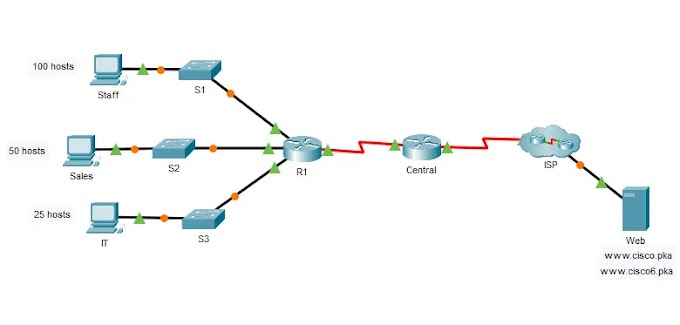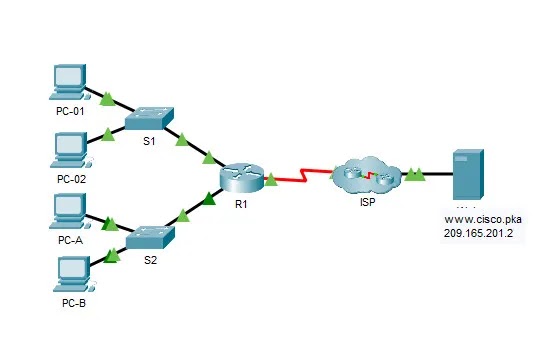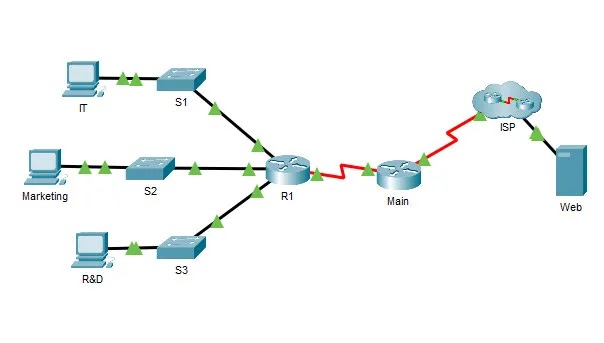Introduction to Networks v7.02 (ITN)
CCNA 1 v7 – Introduction to Networks v7.0 (ITN):
- Based on CCNA 6.0 Intro to Networking (ITN)
- Minor updates and refinements
CCNA 1 v7.0 – The
first course in the CCNA curriculum introduces the architectures, models,
protocols, and networking elements that connect users, devices, applications
and data through the Internet and across modern computer networks – including
IP addressing and Ethernet fundamentals.
|
Online Test |
|
|
Module Group Exams |
|
|
Modules 1 – 3: Basic Network
Connectivity and Communications Exam Answers |
|
|
Modules 14 – 15: Network
Application Communications Exam Answers |
|
|
Modules 16 – 17: Building and
Securing a Small Network Exam Answers |
|
|
Practice Exams |
|
|
Final Skills Exams |
|
|
Final Exam |
|
|
Study Material |
Objective |
Quiz |
|
Module 1: Networking Today |
Explain
the advances in modern network technologies. |
Quiz Exam |
|
Module 2: Basic Switch and End
Device Configuration |
Implement
initial settings inlcuding passwords, IP addressing, and default gateway
parameters on a network switch and end devices. |
Quiz Exam |
|
Module 3: Protocols and Models |
Explain
how network protocols enable devices to access local and remote network
resources. |
Quiz Exam |
|
Module 4: Physical Layer |
Explain
how physical layer protocols, services, and network media support
communications across data networks. |
Quiz Exam |
|
Module 5: Number Systems |
Calculate
numbers between decimal, binary, and hexadecimal systems. |
Quiz Exam |
|
Module 6: Data Link Layer |
Explain
how media access control in the data link layer supports communication across
networks. |
Quiz Exam |
|
Explain
how Ethernet operates in a switched network. |
Quiz Exam |
|
|
Module 8: Network Layer |
Explain
how routers use network layer protocols and services to enable end-to-end
connectivity. |
Quiz Exam |
|
Module 9: Address Resolution |
Explain
how ARP and ND enable communication on a local area network. |
Quiz Exam |
|
Module 10: Basic Router
Configuration |
Implement
initial settings on a router and end devices. |
Quiz Exam |
|
Module 11: IPv4 Addressing |
Calculate
an IPv4 subnetting scheme to efficiently segment your network. |
Quiz Exam |
|
Module 12: IPv6 Addressing |
Calculate
an IPv6 subnetting scheme to efficiently segment your network. |
Quiz Exam |
|
Module 13: ICMP |
Explain
how ICMP manages messaging between devices. |
Quiz Exam |
|
Module 14: Transport Layer |
Compare
the operations of transport layer protocols in supporting end-to-end
communcation. |
Quiz Exam |
|
Module 15: Application Layer |
Explain
the operation of application layer protocols in providing support to end-user
applications. |
Quiz Exam |
|
Module 16: Network Security
Fundamentals |
Explain
the operation of application layer protocols in providing support to end-user
applications. |
Quiz Exam |
|
Module 17: Build a Small Network |
Implement
a network design for a small network to include a router, a switch, and end
devices. |
Quiz Exam |







